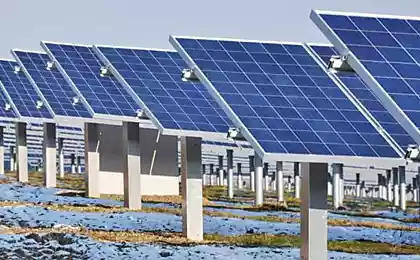463
Scientists measured currents Birkland

The image of the radical current density, and magnetic perturbations in the Northern hemisphere is made in February this year.
A powerful electrical connection with the earth's field occurs in the collision blowing at a supersonic speed of the solar wind and the magnetic field of our Earth. Current generation in the millions of amps accompanied by the glaring effulgence called Birkeland currents linking the magnetosphere with the ionosphere.
They are the channel that connects the wind energy of the Sun with the upper layers of earth's atmosphere. Strongest storms on the Sun are the cause of rapid gusts of wind that give rise to greater currents that can overload the mains, lead to problems in navigation and communication failure.
Today, scientists have learned how to make global measurements of these currents, which allows to understand how solar storms will react planet.
Thanks to the Iridium satellite network, which was used in the experiments to study the response of planetary electrodynamics and magnetosphere, it was found that the response of the Earth occurs in two stages.
Appearing to noon in the polar regions, currents of about a half-hour retain its stability. Then comes the next phase: the most powerful currents arise by midnight and join the primary. Because of the initiated in the second phase, processes in the polar atmosphere remains a large part of wind energy that occurs in the Sun.
At this time the efforts of scientists aimed to examine whether the delay between the two stages to give some warning of impending changes in the weather in space.
The Butterfly Nebula, captured by Hubble
New fast charging technology allows to use batteries for 20 years























